Witch’s Butter? Coral Tooth? Bleeding Tooth? How about some Skullcaps? Or Wrinkled Crust? Many fall fungi of Northern California are popping out fruiting bodies right now in wet areas, just in time for the spookiest time of the year. In this blog, I’ll introduce you to some of the common fungi that have either a Halloween-y name, or their coloration fits the fall vibes, currently fruiting in Humboldt County, CA.

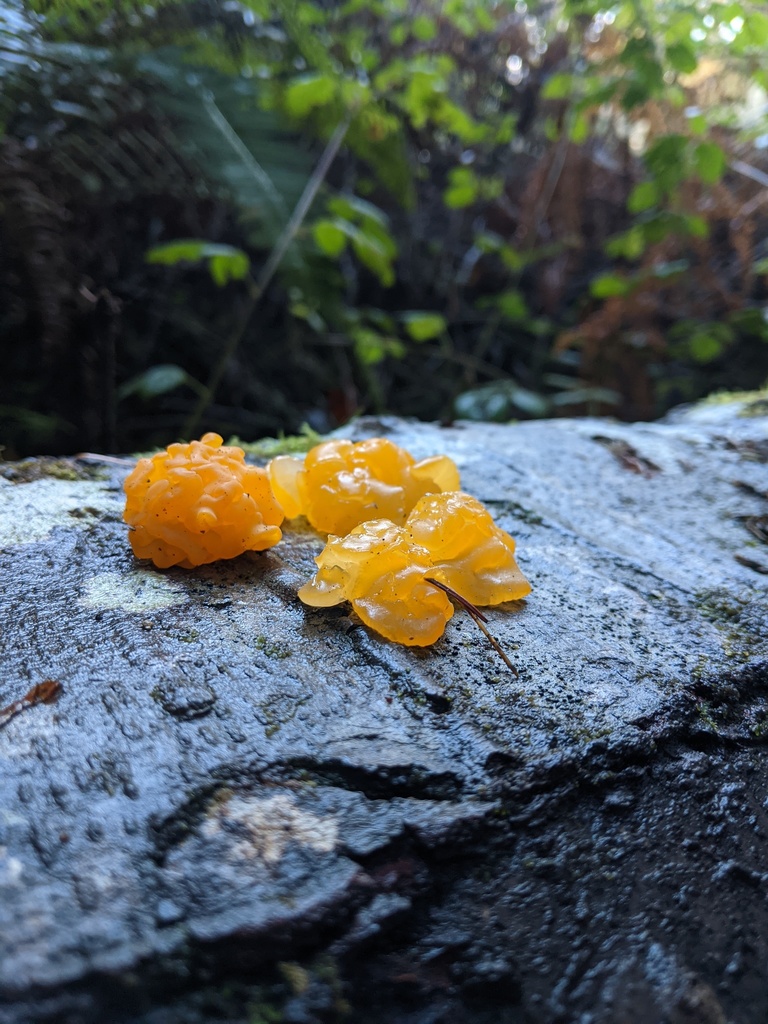

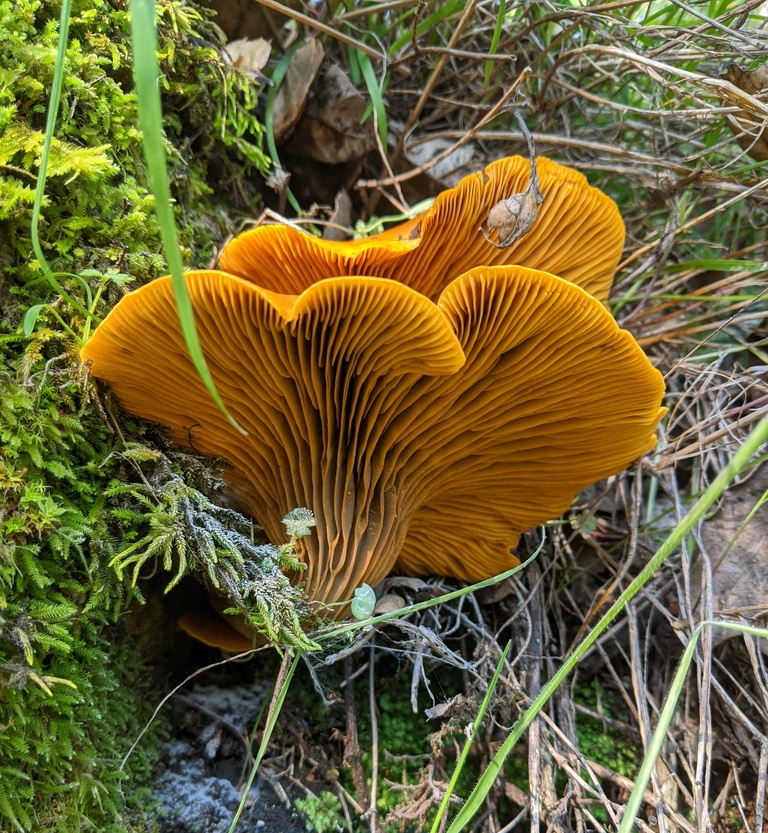
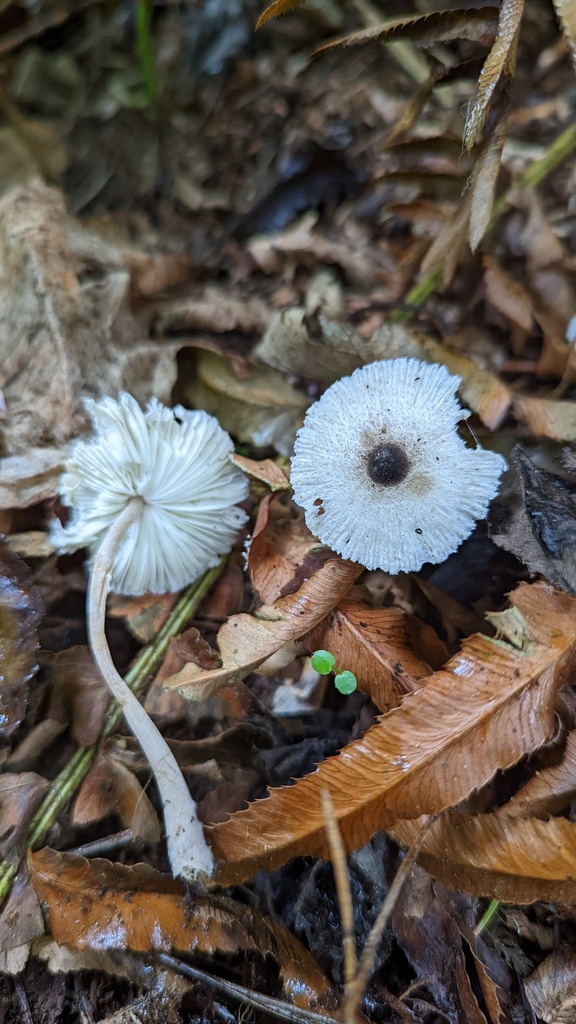
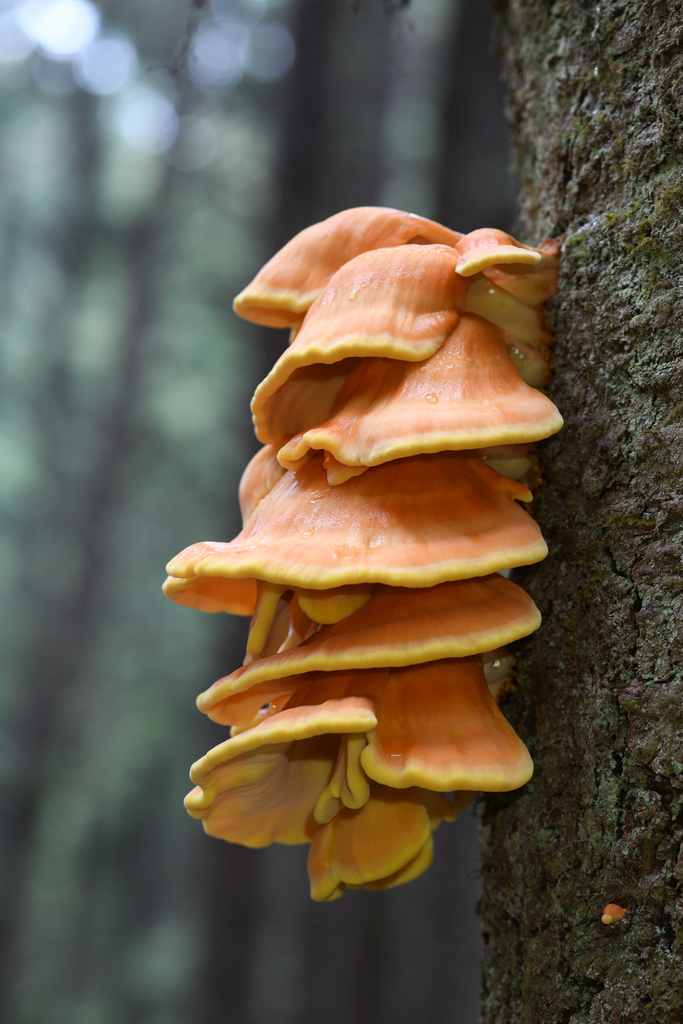
So take a gander at the photos of the fungi, short read about the species(s) is beneath, including the habitat and ecology. I didn’t want to go into detail on edibility, as that’s something I’ve never pursued. I believe fungi need appreciation for their intrinsic value and interest, not just for how our human taste buds will react.
The only reoccurring term in this blog is saprobic, which means the fungi break down organic matter to gain nutrients in a low-oxygen environment.
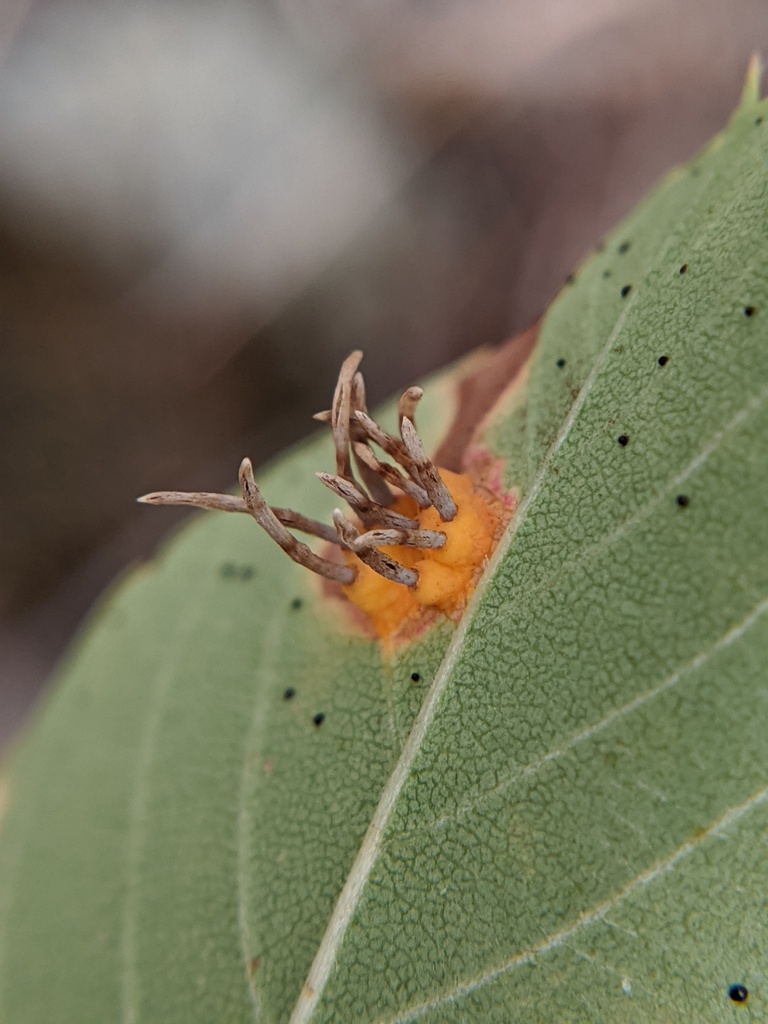
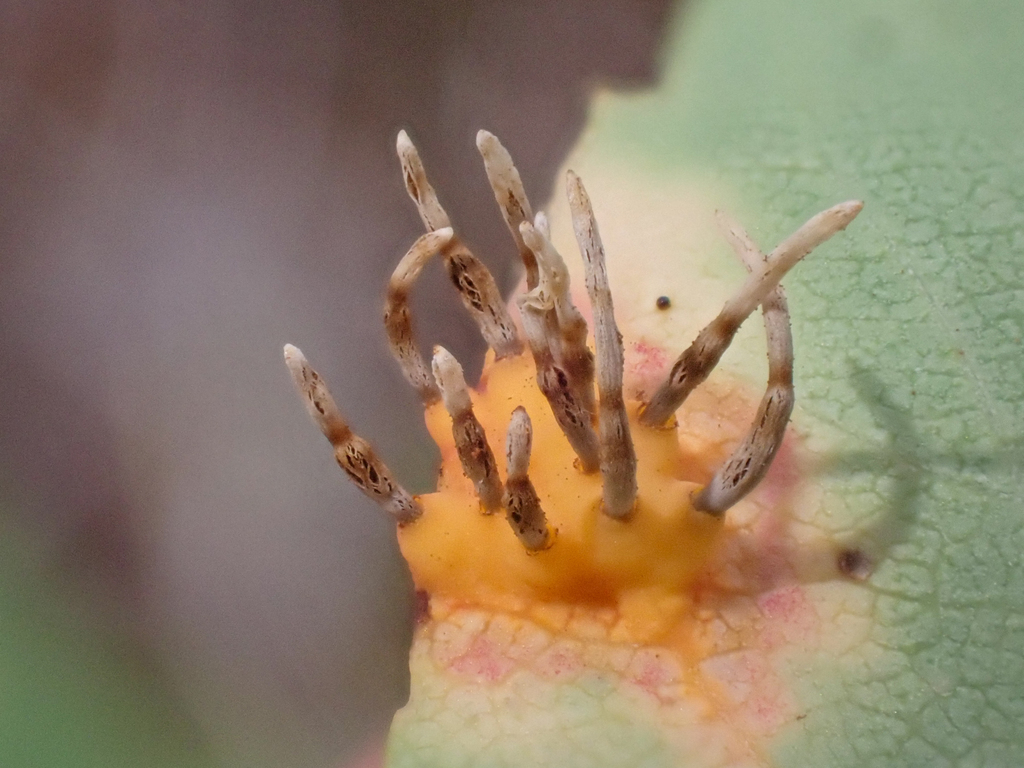
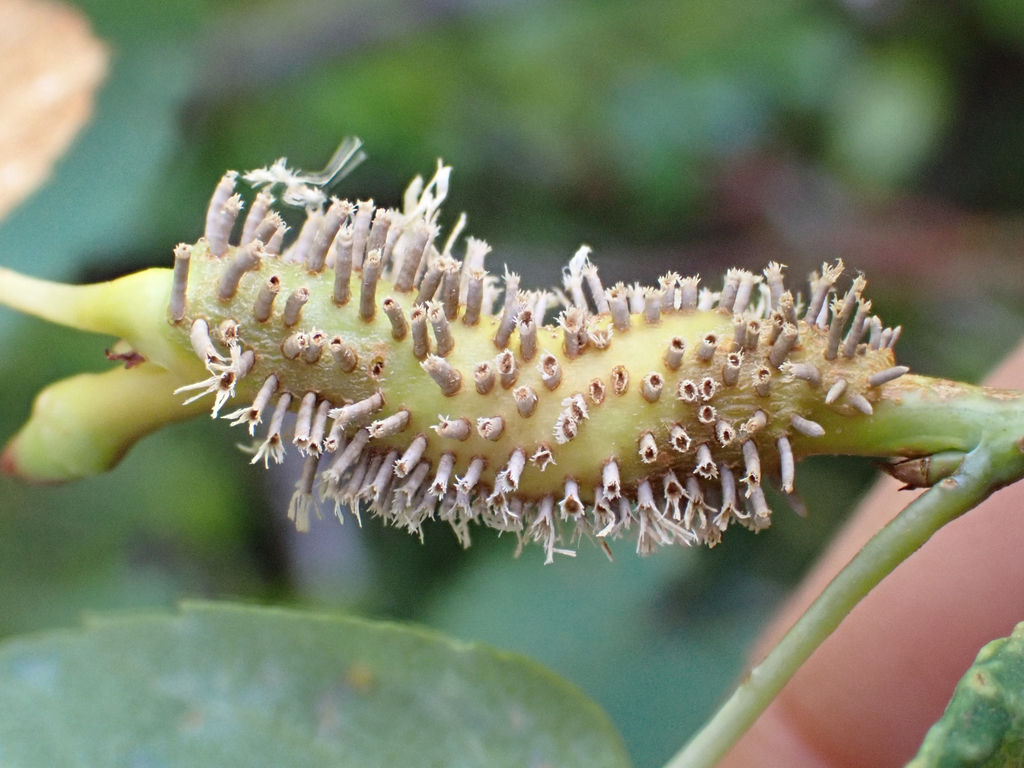
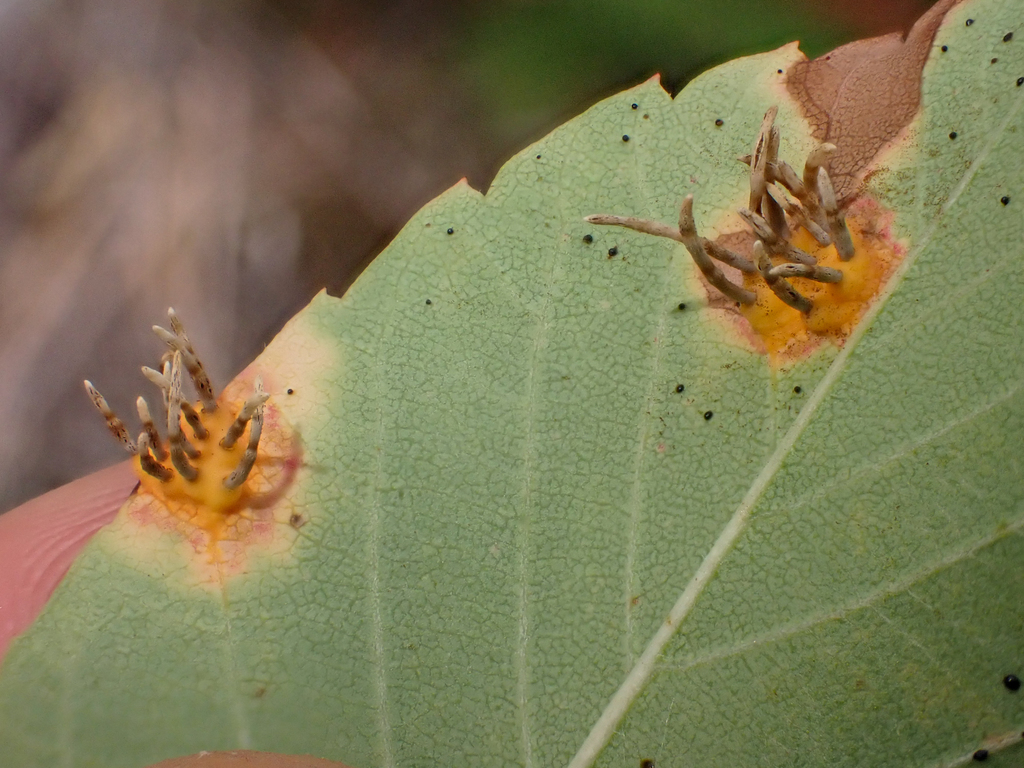
Genus Gymnosporangium
First up we have perhaps the creepiest fungi, Gymnosporangium. These projections give me creepy-skeleton-fingers-busting-through-pumpkin vibes. Oooof, shiver-inducing! We’re starting off on a non-traditional route, as this is a rust fungus. In most cases, an orange to rust-colored substance is left on the host, which most of the time does not cause serious damage.
In some descriptions, the projections seen in my photos are described as “tentacle-like spore tubes called telial horns” (iNat). Spores are released and dispersed via the wind from these “tentacles.”
Habitat? Jupiner, Rosaceae, Amygdaloideae (pears, apples, and others)
Ecology? Heteroecious plant-pathogenic fungi, which means it requires two host plants and causes diseases in the host plants, which are caused by a pathogen
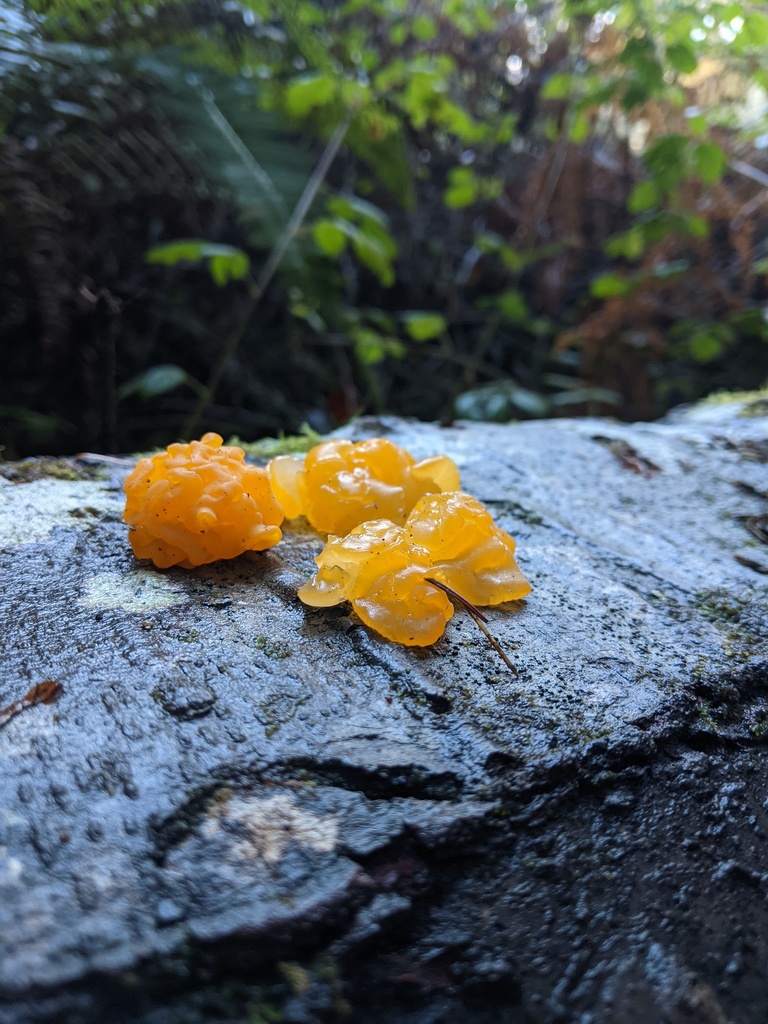
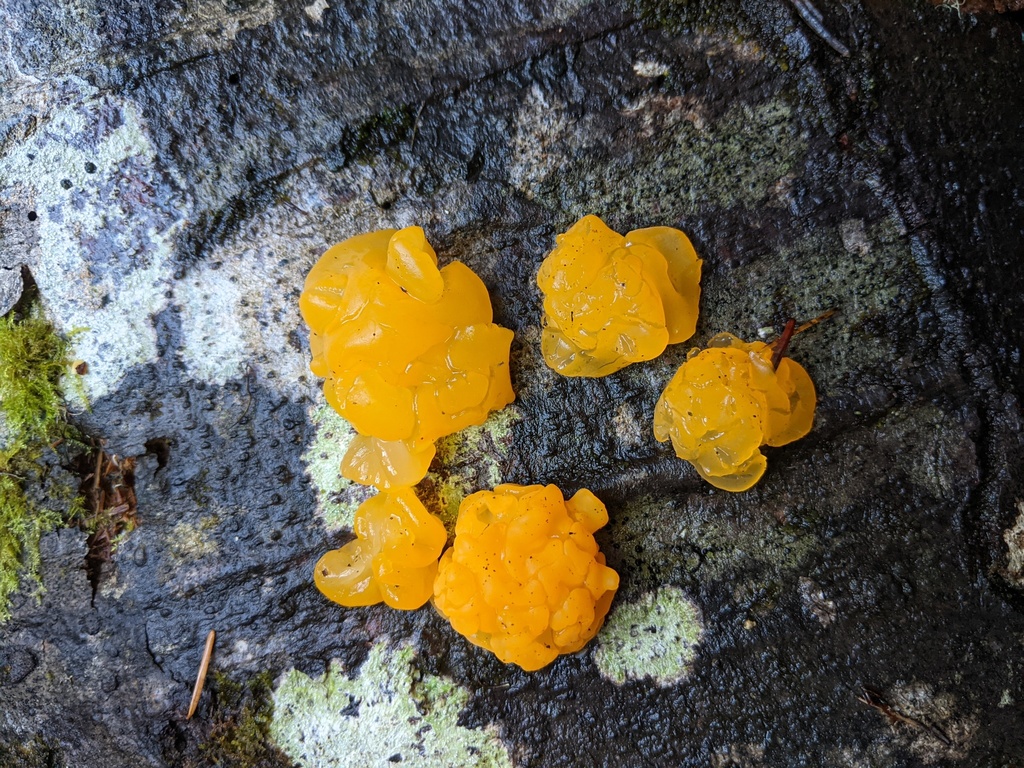
Witch’s Butter, Tremella mesenterica
Witch’s Butter, also known as ‘Yellow Brain Fungus,’ is an absolute favorite of mine. Yellow gooey jelly that can be found easily in the nearby woods? Yes, please!
Habitat? Dead deciduous wood, likes oaks
Ecology? Parasitic on fungi. It attacks fungi that decompose wood, which would be crust fungi. Instead of growing hyphae, and spreading via hyphae it has a yeast phase. This fungi grows and spreads as “individual yeast cells” (FungusFactsFriday). Woah.
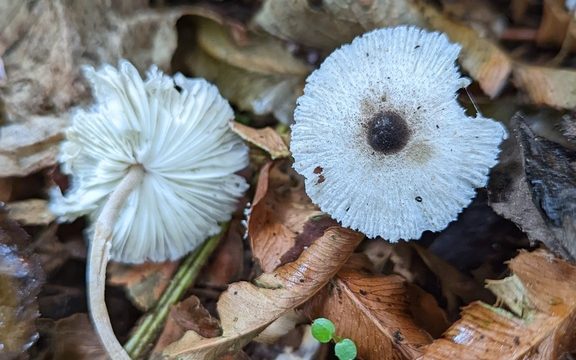

Skullcap Dapperling, Leucocoprinus brebissonii
This delicate small beauty has quite a frightening name. Skullcap. I’m not sure I see the resemblance, but this mushroom seen in British Columbia is truly skull-like.
It’s newly-ish described, having gone under the radar of mycologists due to being classified as L. brebissoni initially in the 1870s.
Habitat? In humus/grass/wet leaf litter/woodchip areas under deciduous trees. It can be found in plant pots, greenhouses, and other urban areas in rich soil.
Ecology? Saprotroph in forest litter

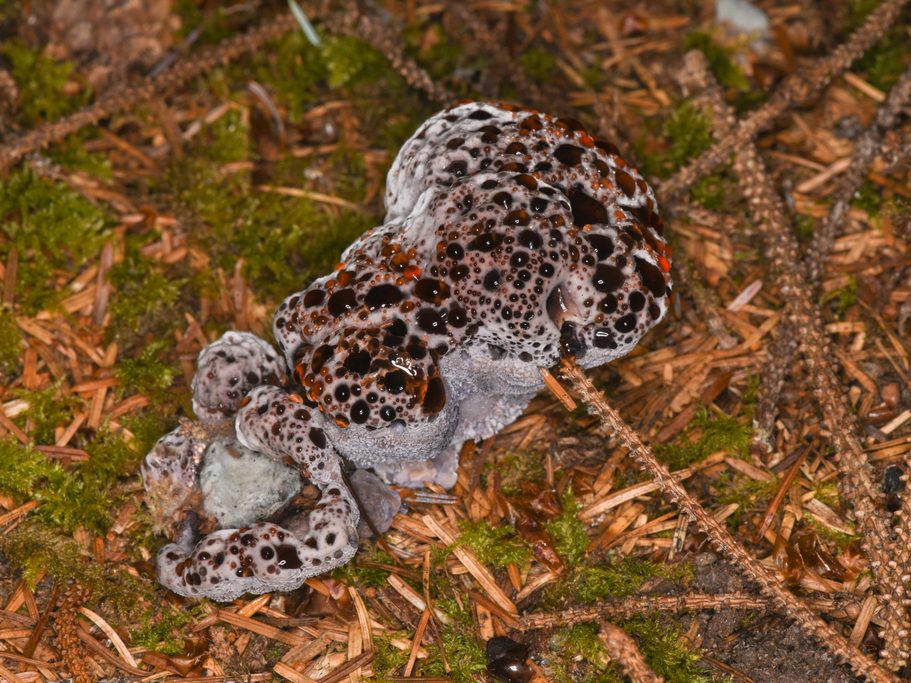
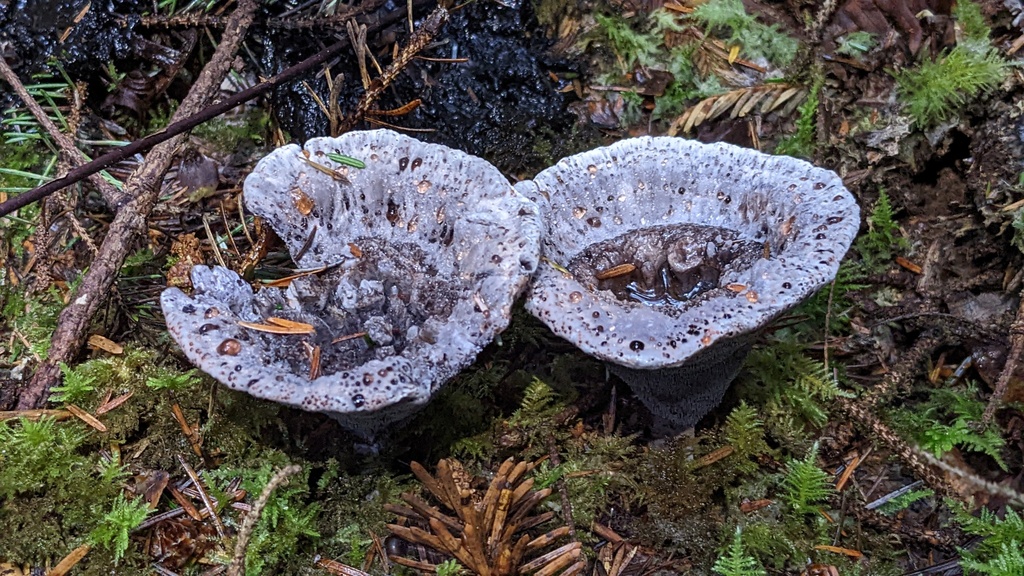
Bleeding Blue Tooth, Hydnellum cyanopodium
The first Bleeding Blue Tooth I observed and photographed this year was brought about by MandyMushii on iNaturalist on a recent fungal adventure in Sue-Meg State Park. Oooo it was a fun one to photograph. I plan to go back to it throughout the winter to see how it’s doing, growing, and bleeding.
The “bleeding” is caused by guttation, which is the fungi’s way of releasing excess water and substances, even potentially toxic substances.
Habitat? Uncommon/rare in coastal old-growth forests, and within Sitka Spruce’s range.
Ecology? Ectomycorrhizal

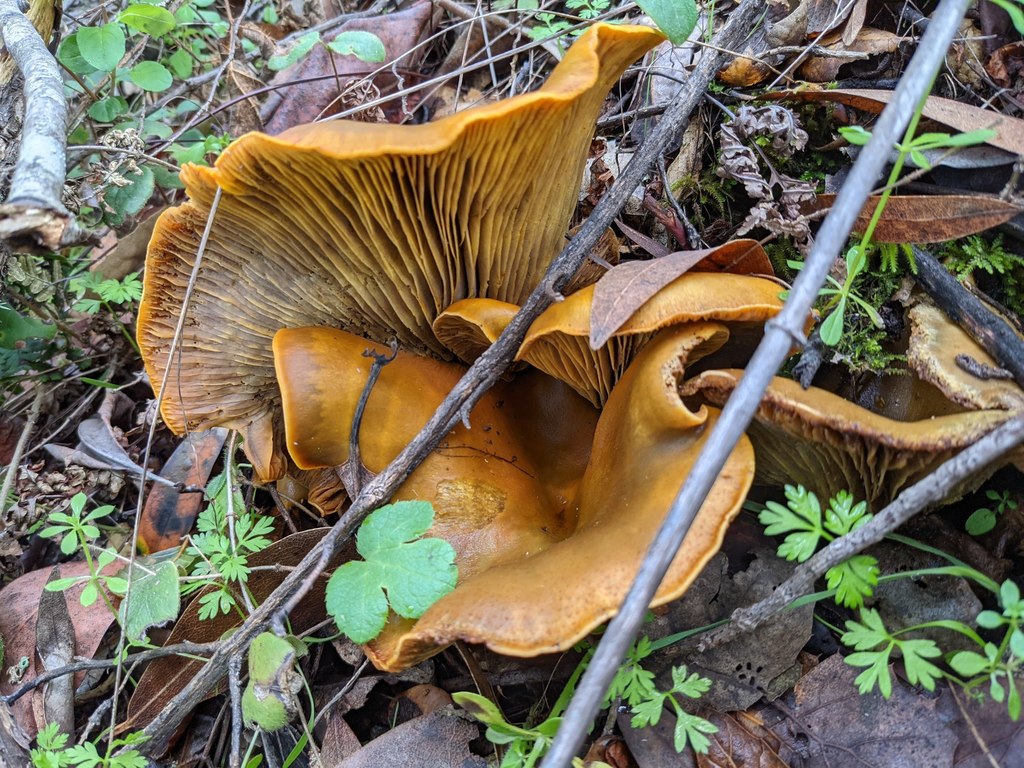

Western Jack-O’-Lantern, Omphalotus olivascens
I mean. . . come on. The name? Perfection for this time of the year.
While this one definitely looks like the super sought-after Chanterelle, the jack-o’-lantern has true gills.
Bonus points for this mushroom as it BIOLUMINESCES!
Warning! This pumpkin is poisonous. Refrain yourselves!
Habitat? Grows on a wide variety of hosts including oak, Chinquapin, and eucalyptus. Often grow in overlapping clusters. Fruit on stumps, dead roots, and logs but rarely snags.
Ecology? Saprobic, or parasitic. Causes white rot on trees
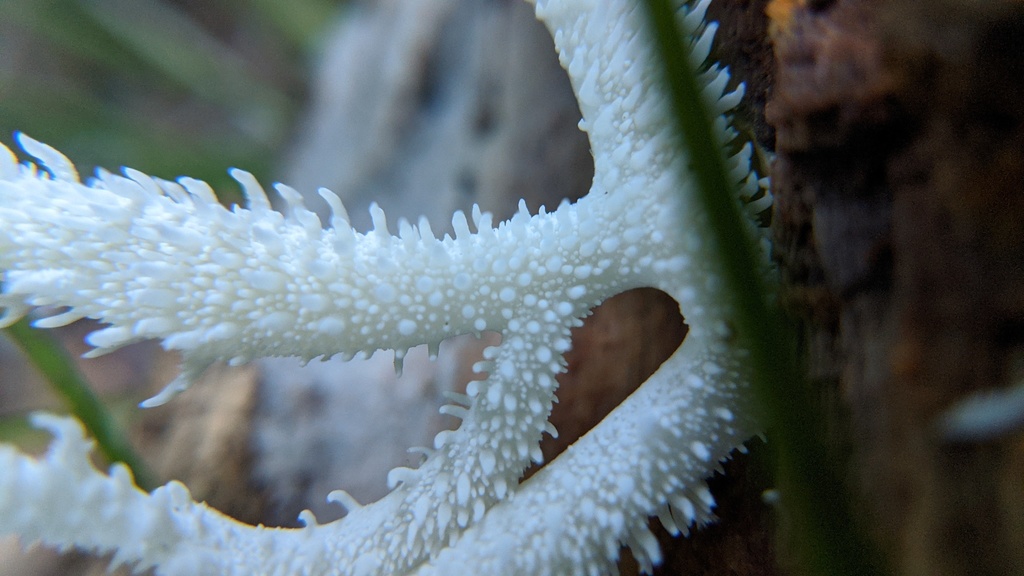

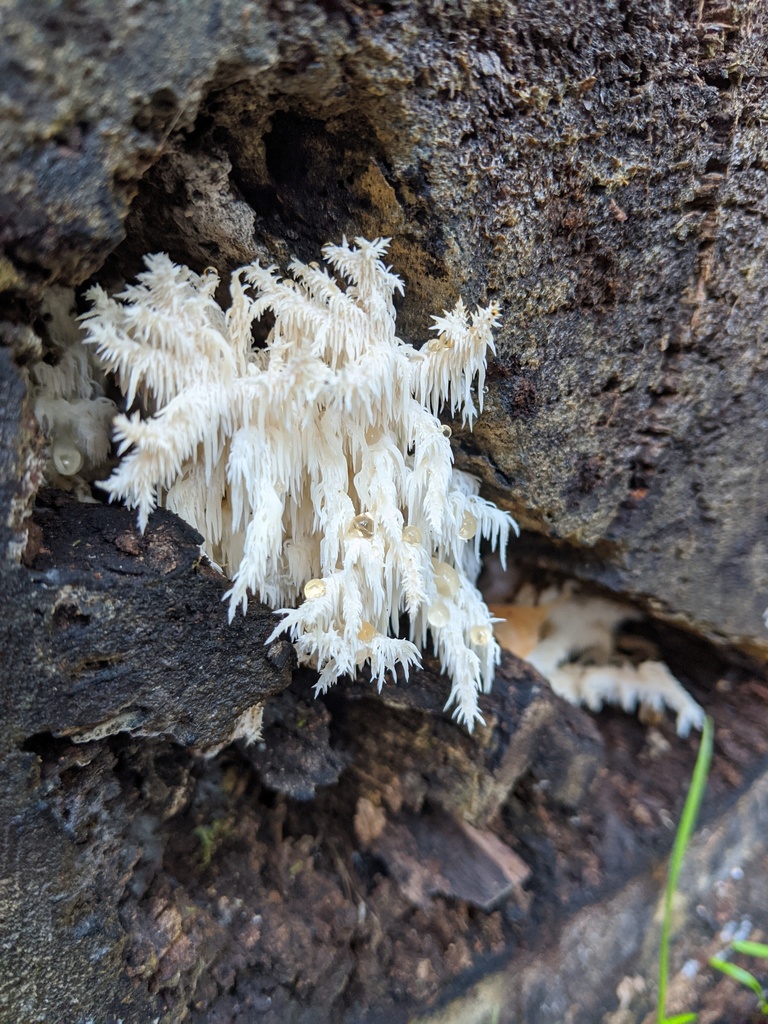
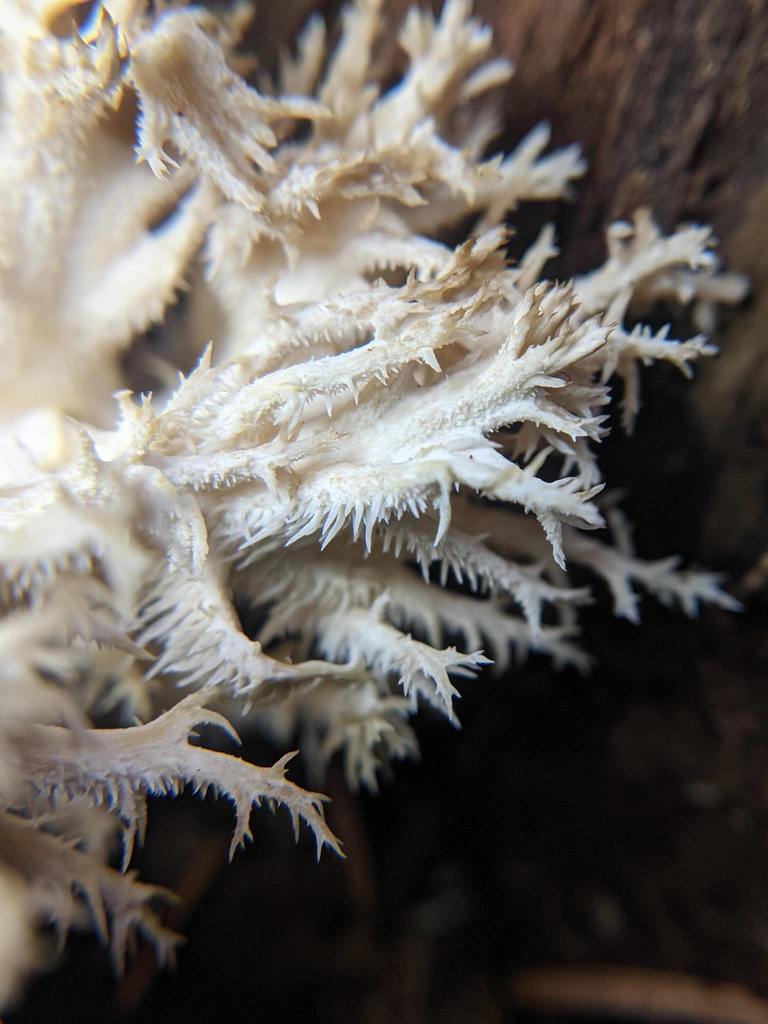
Coral Tooth Fungus, Hericium coralloides
This mushroom makes me think of an intricate soap sculpture, meets marine coral, creepy icicles, or a reject-flocked Christmas tree that was discarded on the sidewalk before Christmas.
Habitat? Snags and fallen decayed wood of hardwoods, like Tanoak and live oak.
Ecology? Saprobic and perhaps parasitic


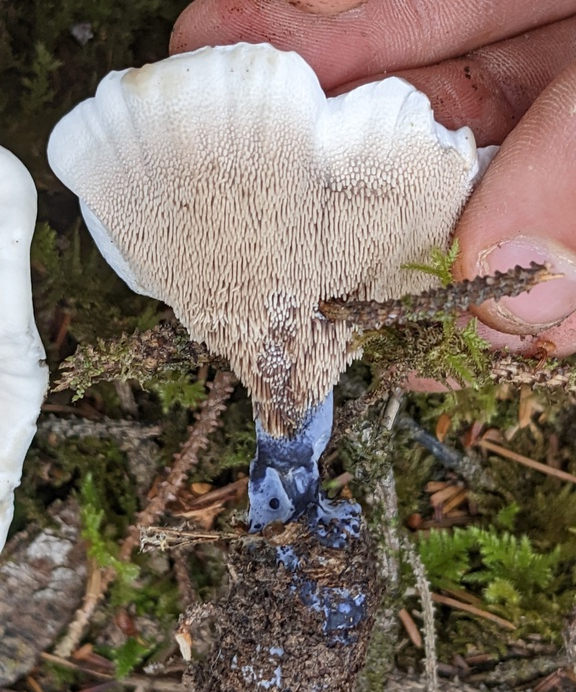
Hedgehog Mushrooms, Genus Hydnum
TEEF! Nothing more spooky than a bazillion teeth, and Hedgehog mushrooms deliver. These teeth are the spore-bearing structures, in contrast to the gills or pores of other mushies.
Habitat? Grows on wood and on the ground, solitary or scattered under conifers, often among moss
Ecology? Mycorrhizal with conifers, H. suaveolens has a preference for spruce, H. oregonense has a preference for Douglas-fir, Bishop pine, and western hemlock
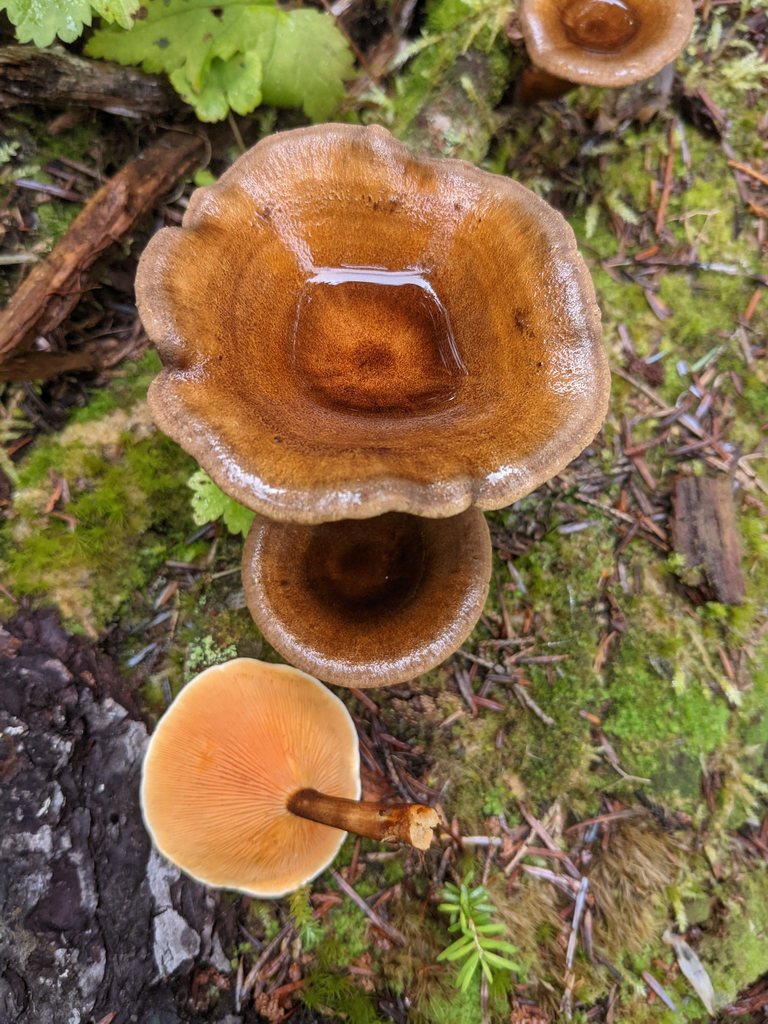
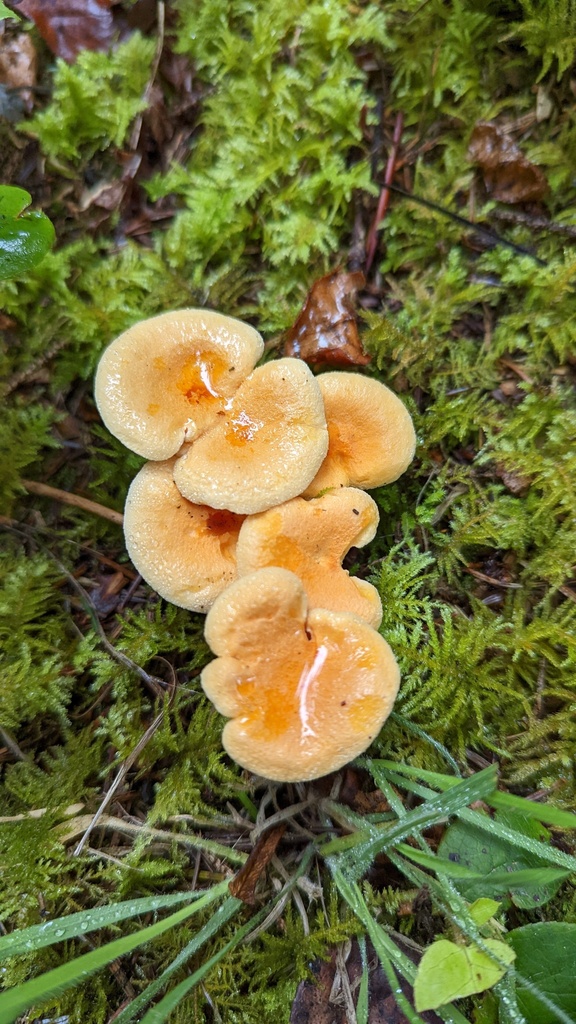
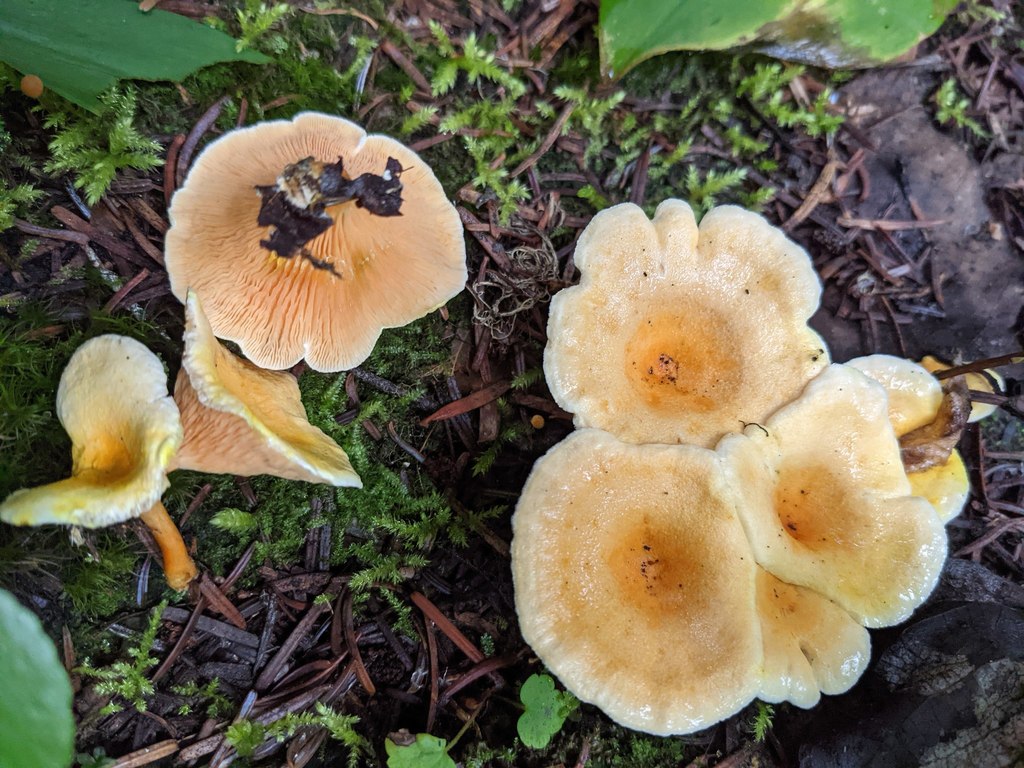
False Chanterelle Hygrophoropsis aurantiaca
Think of this mushroom as common and predictable as deeply discounted candy the day after Halloween at the local pharmacy or grocery store.
Here in Humboldt, in the early days of mushroom season, I’m continually surprised at the diversity of False Chanterelle cap colors, from medium brown to light beige. So diverse!
Even though these look like true chanterelles of the genus Cantharellus, ours has flimsy true gills, whereas chanterelles have hard false gills.
Habitat? Ground dwelling in forest litter on rotting wood, stumps or humus, mostly under conifers but very widespread
Ecology? Saprobic
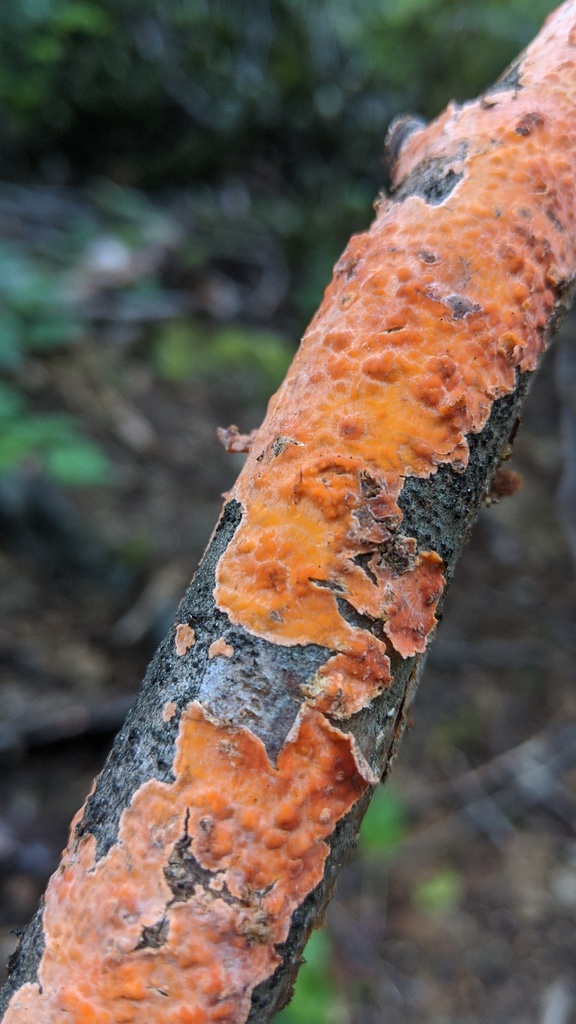
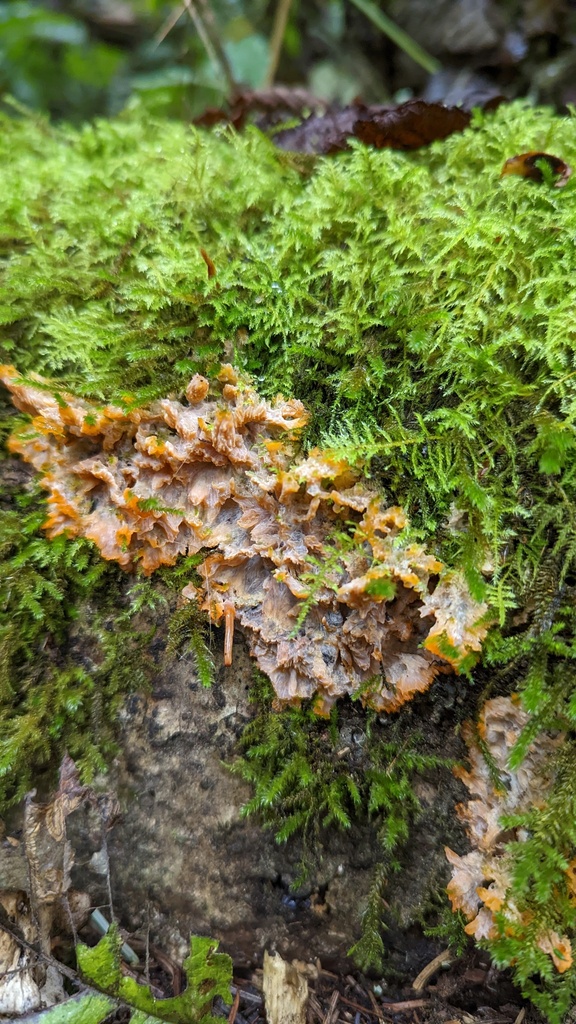
Wrinkled Crust, Phlebia radiata
I hope my skin doesn’t look like this one day. But if it does, I’ll have an easy Halloween costume. Phlebia is a greek word, meaning/referring to veins.
This crust fungus is also known as resupinate, meaning most of the fungi is attached to its substrate.
Habitat? Hardwoods and Conifers across North America, most often fallen wood without bark. Likes Tanoak and live oak.
Ecology? Saprobic
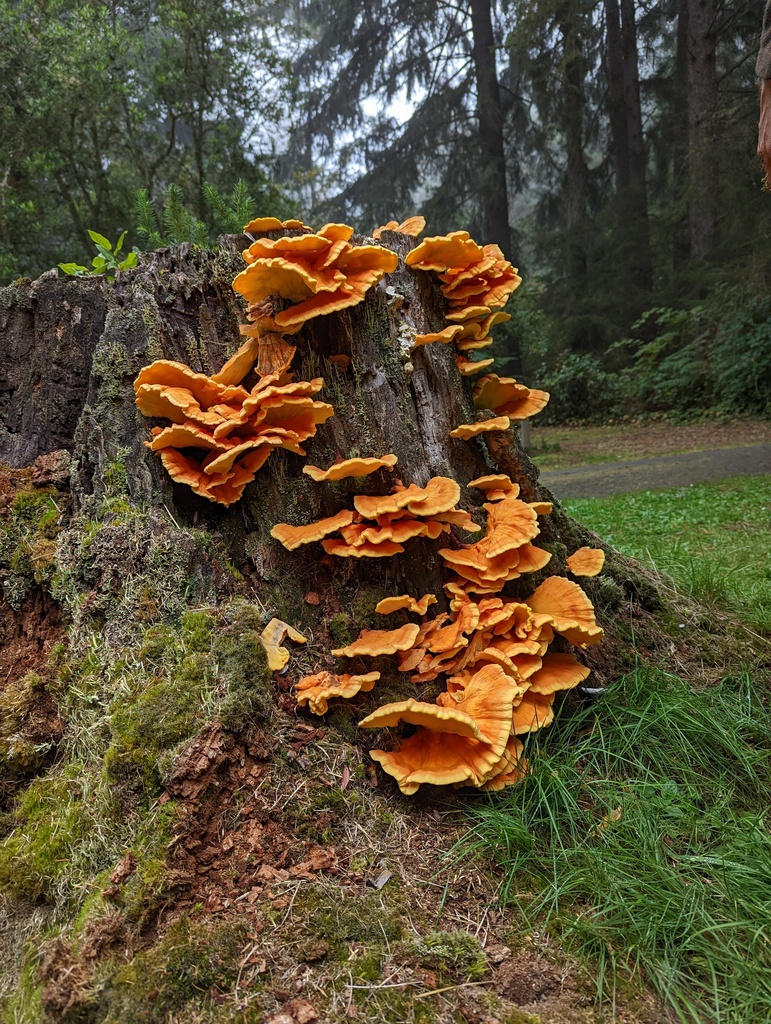

Conifer Chicken on the Woods, Laetiporus conifericola
The color and size of this fungi’s fruit right now in Humboldt County is just nuts! L. conifericola’s orange body with the yellow trim is just GORGEOUS! Like pumpkin pancakes smacked onto a tree.
Habitat? Clustered on dead hardwood, conifer trees, and Eucalyptus, on living trees or snags. Causes ‘brown rot’ in trees
Ecology? Parasitic and saprobic

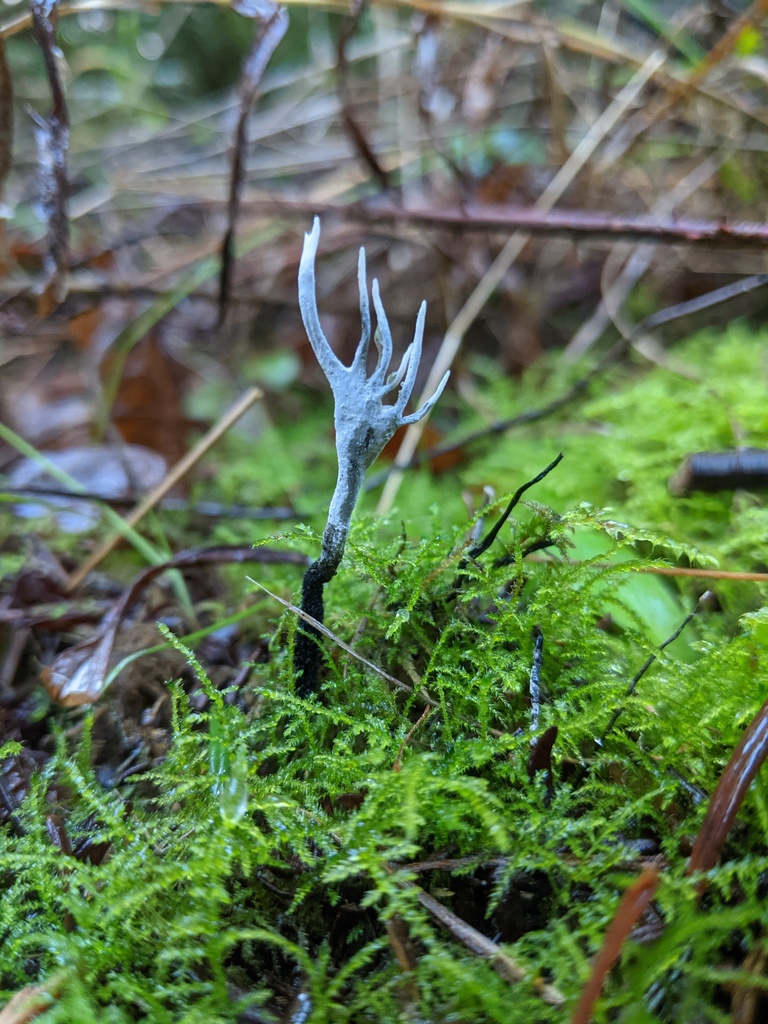
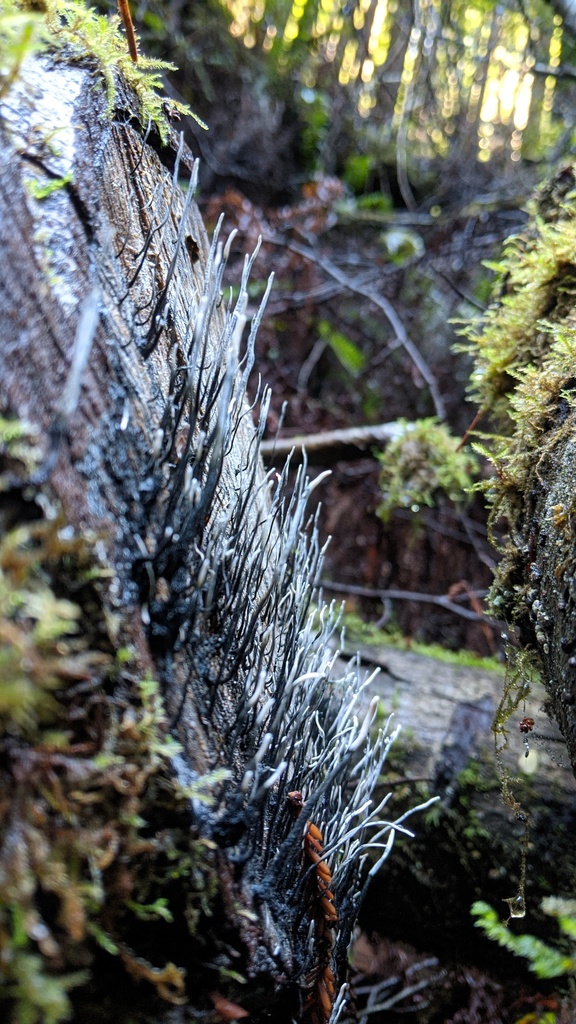
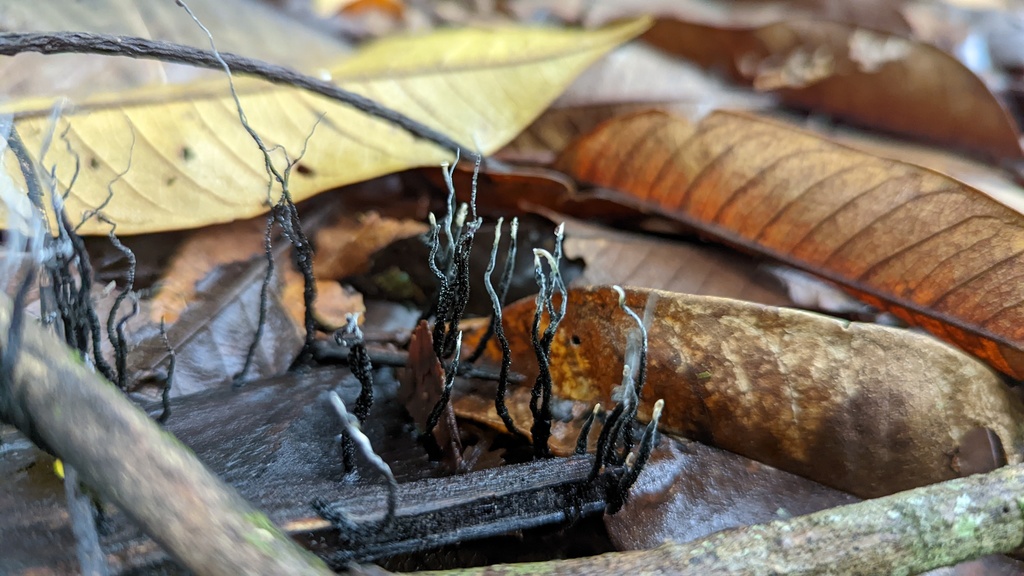
Honorable Mention goes to Candlesnuff Fungus, Xylaria hypoxylon. If you get a chance to flick some of these during the fall/winter and watch the white conidia (asexual spores) spread. I highly suggest it.
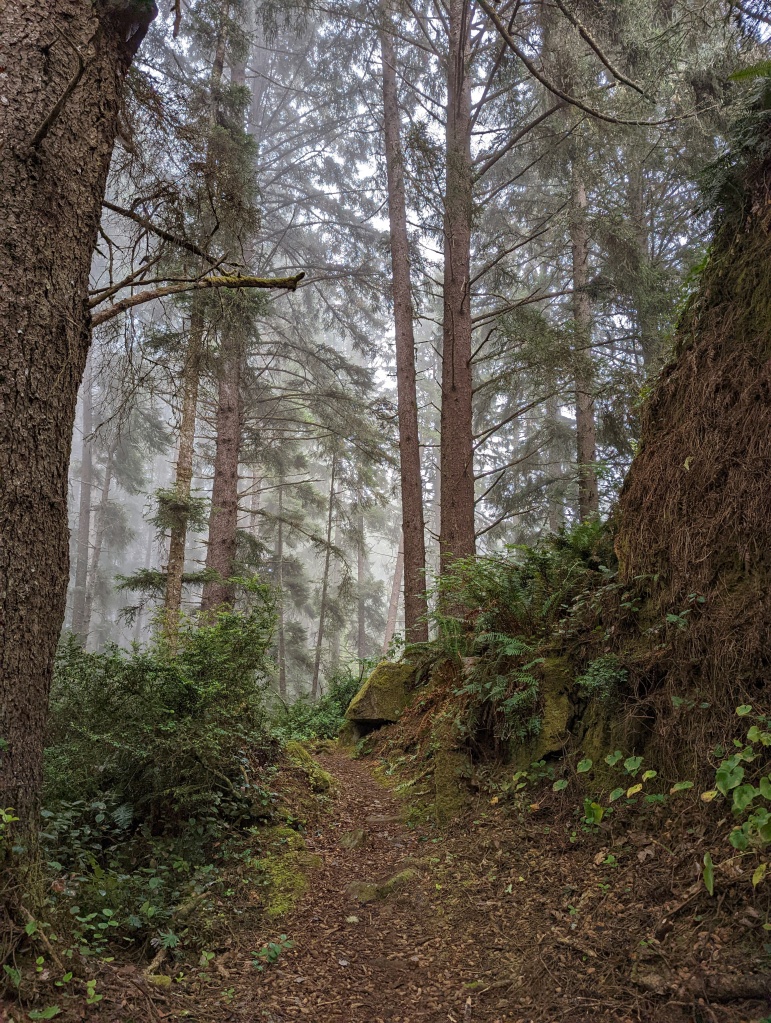
Did I miss something? Are there any spooky-wooky fungi that you think should’ve been highlighted? Let me know by leaving a comment!
If you are enjoying these blog posts please scroll to the bottom right side of this webpage and add your email to be notified of future blog posts!
References
- Mushrooms of the Redwood Coast, Noah Siegel and Christian Schwarz
- Witches’ Butter, Missouri Department of Conservation
- #059 Tremella mesenterica, Witch’s Butter, Fungus Fact Friday
- #102: The Chicken of the Woods or Sulfur Shelf Fungus, Fungus Fact Friday
- Western Sulphur Shelf Species: Laetiporus gilbertsonii and conifericola, Bay Area Mycological Society
- Phlebia radiata, MushroomExpert.com
- Phlebia radiata Fr. – Wrinkled Crust, First-Nature
- Hericium coralloides, MushroomExpert.com
- Bleeding Blue Tooth (Hydnellum cyanopodium), WildMacro.com
- Fungal Guttation, a Source of Bioactive Compounds and Its Ecological Role—AReview, Adam Krainand & Piotr Siupka, 2021, Research Gate
- California Fungi—Leucocoprinus brebissonii, Mykoweb.com
- Skullcap Dapperling Leucocoprinus brebissonii, iNaturalist
- Lepiotoid Mushrooms, MushroomExpert.com
- Hygrophoropsis aurantiaca, MushroomExpert.com
- Hydnum, Wikipedia page
- Hydnellum suavelens, MushroomExpert.com, Mykoweb.com
- Hydnum oregonense, MushroomExpert.com
- Western Jack-O’-Lantern, iNaturalist
Hi Chloe,
Spooky Gymnosporangium, Coral Tooth ,and Candlesnuff fungus are my creepiest favorites! The other fungus in this well written blog, are just beautiful. I bet science teachers would love your piece for their classrooms. The picture of the foggy forest was super cool and inviting. Well done Chloe (as always)!
LikeLike
Thank you! Those are some of my favorites too! The forests are often foggy around here, especially along the coast!
LikeLike
My favorites are the coral and jackolantern! Oh. Congratulations on the telsa!!stay safe!!! 💕💕🙏💕💕. 👻 🎃 👽 Grandma. 🐻🐻
LikeLike
Thanks Dianne! You have good choice on mushrooms!
LikeLike